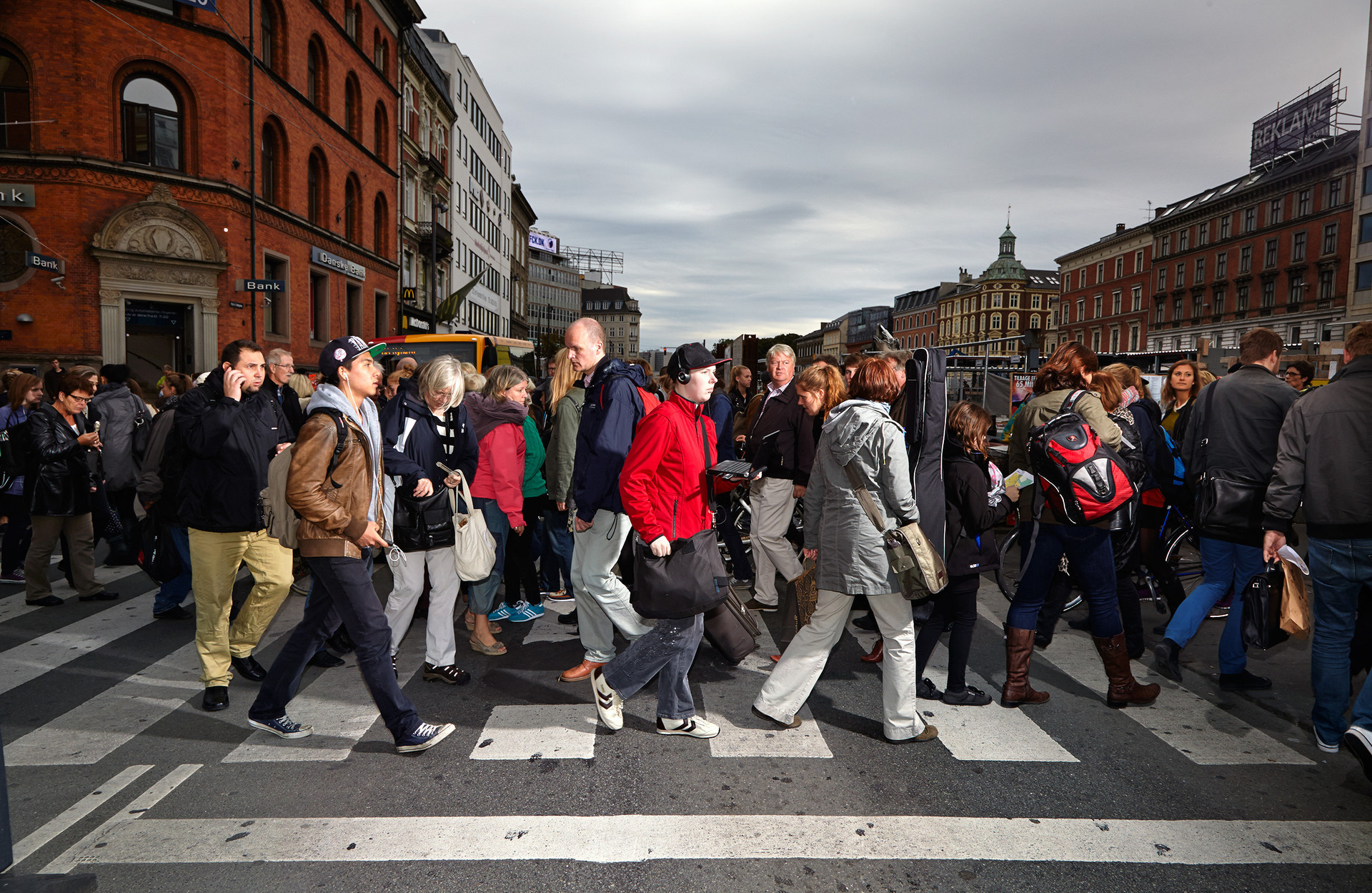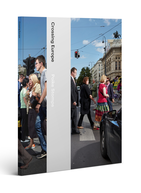Europe is growing at the grassroots. Europe is an experience, not an idea. It is strengthened not by lofty debate about its true nature conducted in chic convention centers, but by all those everyday encounters of ordinary people in buses and in classrooms, at open-air markets and intersections.
Karl Schlögel formulated this insight in his fantastic 2008 book Steden lezen: De stille wording van Europa (‘Reading cities: The silent formation of Europe’). His advice: if you want to get to know Europe, travel the continent, nose your way around the cities in the north and south, east and west. And to "read, interpret, and understand cities, put down the guidebook, tramp the streets, take a stroll, get lost, and make your own fascinating discoveries."
Heading resolutely toward a new future
That is precisely what Poike Stomps did. He traveled to all 42 European capitals, wandered around, met people, and had unexpected experiences. And then he took a picture, capturing the essence of each city in a single image. At an intersection, the place where life momentarily stands still for a red light. Where people gather, yet are alone, forming a society in miniature, unthinkingly passing one another by, and sometimes, if only for a moment, meeting.
Like in Bucharest, where we see a quintessential urban scene: pedestrians crossing a broad, 20th-century boulevard, coming from work or from the store, on their way home or to a cafe, to friends or to lovers. Some have their eyes cast down at that 45-degree angle typical of the modern city dweller sunk in thought, cut off from the crowd and avoiding eye contact. Take the man in the middle in jeans and a khaki shirt. Somehow he embodies the cliché image of Romania, the poorest country of the European Union, which seldom makes the papers in the West except with corruption scandals.
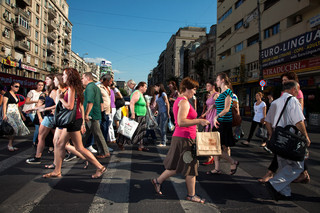
Bucharest, Romania. Photo by Poike Stomps
It is a photo that invites you to keep looking and keep wondering. What is that woman in the green T-shirt actually carrying? And there on the left, next to the Romanian flag, is that the EU flag we see hanging there, a little forlornly? And on the right, that "Euro-Lingua" advertised on the big sign, is that agency a stepping stone for many Romanians to connect, through language, with the promised land of the European Union?
Karl Schlögel concluded the portrait of Bucharest he wrote in 2004 with the words: "And yet amid all the misery, the filth, and the chaos of the time after 1989, something started to grow: the heart of the city started beating again. Bucharest is shining once more."
Stomps’ shot illustrates this perfectly. Among the somewhat bleak buildings, a palette of people provide a burst of color. The girl in blue with both arms swinging forward, striding out on strong limbs, her eyes on the horizon, seems to be heading resolutely toward a new future.
With trust in Europe waning...
I am writing this at the end of a season in which many have lost faith in a new future for Europe. At our campsite in France this summer, I read one Facebook post after another from friends who view the way Greece was forced to its knees as evidence of the bankruptcy of the idea of European social-mindedness and solidarity. The word "Lexit" is gaining currency: a left-wing secession from the European Union. The prevailing sentiment is that the great European cooperative experiment has degenerated into an undemocratic, technocratic project that can no longer be salvaged; and we would do better to simply put it behind us. As if a return to the nation-state were the answer.
With confidence in the euro and the European Union waning, the European ideal – of solidarity between the peoples of this continent, the idea that we must overcome our nationalism and that only together can we conquer our common problems – is also being consigned to the scrap heap.
There are now no walls, and no coordinates either; no one knows where the West is, and where the East.
It was also the summer I read Europe in Sepia , by Dubravka Ugrešić, a Croatian writer living in Amsterdam. She describes a continent wallowing in a nostalgia devoid of any sense of history, a Europe wrestling with an appalling lack of vision for the future, and where everyone grumbles and complains out of fear or uncertainty. "Once two zones separated by a pretty decent wall," she writes with irony, "in the space of twenty years Europe has become a chaotic mega-market. There are now no walls, and no coordinates either; no one knows where the West is, and where the East."
Her own city of Zagreb is perhaps the ultimate symbol of this confusion and emptiness. Ugrešić left Croatia in the early 1990s after taking a stand against "the hysteria of nationalism." Since then, things have only gotten worse. In the 20 years since Croatia’s independence, its people have "desecrated or destroyed three thousand monuments to the victims of fascism, burned almost three million books, and ‘reduced’ the Serbian ethnic minority by half," she writes bitterly. "[Croatia] is now writing its history, a history of pure, untainted souls, of hardworking and honest folk who believe in one God." Ugrešić characterizes Croatia as a disorganized, confused society that celebrates war criminals as heroes. And she lets Zagreb have it – poor old Zagreb – for being a pseudo-city of "terminal moroseness," a "deaf and indifferent urban stain, its pulse barely discernible."
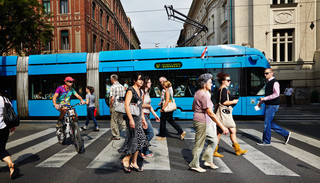
Zagreb, Croatia. Photo by Poike Stomps
Is Europe an intersection where no one meets?
After reading Ugrešić’s book, you see that flag on the tram in Poike Stomps’ photo in a different light. Where else would the national flag adorn public transportation, you wonder. But whereas the Croatian writer seems to have lost all faith in Europe and her native land, Stomps’ photographs offer openings, possibilities, glimmers of hope. There’s that man in the colorful clothes zigzagging through the city’s workers and shoppers on his bike. Or that woman there in the middle – she doesn’t have the empty, slightly somber look of the urban pedestrian, but gives the camera an ironic look through her hair.
The photographs offer openings, possibilities, glimmers of hope.
Of course a colorful T-shirt and an ironic look say little about how society functions. But the image softens the harsh, inescapable judgment of the place. And it jibes with Poike Stomps’ experience of Zagreb. His genial host showed him a bustling city brimming with cultural hot spots – a far cry from Podunk without a pulse.
And Europe is not lost. While it may be pathetic to make that determination on the basis of 42 photographs, I simply cannot conclude otherwise at the end of this wonderful book. To be sure, the symbols of global consumerism abound: the shopping bags bearing brand names, the smartphones that mesmerize us. Yet the people and the buildings have something about them, something unmistakably European, whether we are in London or Vilnius, in Copenhagen or Lisbon. True, the passersby may be withdrawn and preoccupied, on their way from nothing to nowhere. A cynic would say: Europe is an intersection where no one meets. But there is always someone who breaks the pattern, who looks straight into the camera, confident or curious. Someone who tries to make contact with other passersby. Someone not dressed in the universal uniform of the office worker or the hipster. Someone who strides forth with resolve, toward a future unknown. Like Europe itself.
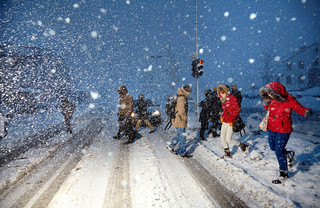
Reykjavik, Iceland. Photo by Poike Stomps



